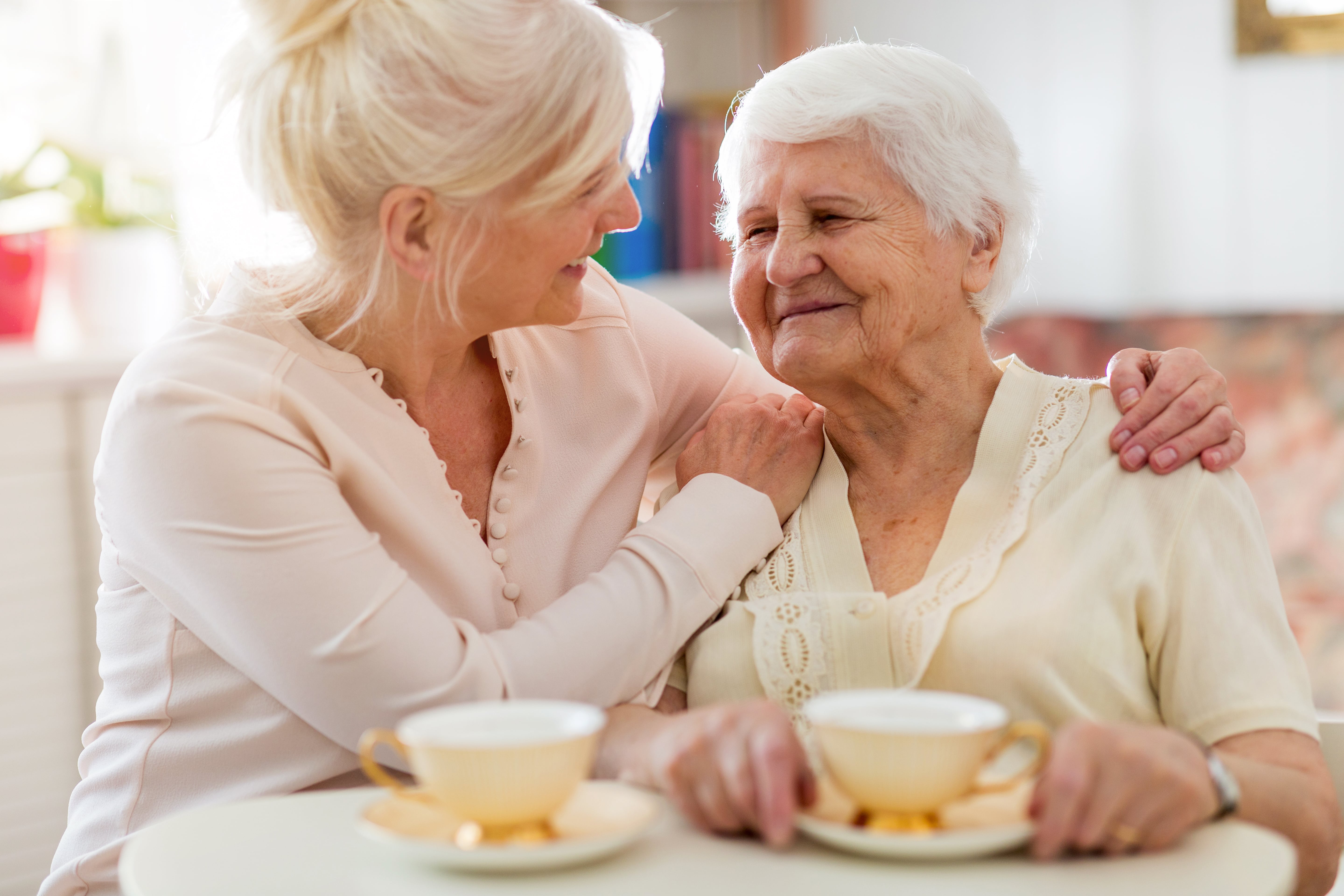Asset Publisher
Things to Look for When Visiting an Older Loved One to Assess Wellbeing
By Julie Hayes | 09/15/2023

A caregiver drinking tea with her mother
As your loved one ages, you’re likely to find yourself worrying more about their wellbeing. Maybe you’re concerned about issues of them living safely in their current home, or taking care of themselves without in-home support. Or maybe you’re anxious about the possibility of memory loss, and early signs of dementia developing without anyone around to notice. These concerns are especially common for long-distance caregivers—who make up roughly 15 percent of all family caregivers.
If you’re worried about a loved one, one way to address your concerns is by paying close attention to them and their home environment when you visit them in person. Here are some important questions to ask yourself:
1. “How does my older loved one look?”
Some changes in appearance happen commonly with age, but not all are a normal part of aging. For example:
- Sudden weight loss may be a sign of illness, malnutrition or depression. Sudden weight gain can also be a sign of illness, depression, an increased lack of physical activity or an unhealthy diet.
- Neglected physical appearance—such as uncombed hair, an unwashed body and dirty clothes—may mean your loved one is self-neglecting, or disregarding their own needs
- Bruises, cuts or injuries could be signs of elder abuse, especially if your loved one is reluctant to say how they happened. They could also be evidence of falls or kitchen accidents.
- Unaddressed symptoms may require a second look. Your loved one may brush off things like a chest cough, an abnormal skin spot or a persistent stiff shoulder as unimportant, but these can all potentially be signs of something more serious.
2. “How do they act?”
While people mature and grow over time, personality and behavior tend to be quite stable from year to year, which is why sudden and unexpected changes can often be a sign of something troubling. When visiting your loved one, be on the lookout for:
- Signs of sadness, loss of interest, feelings of hopelessness and lack of motivation and energy. These are common symptoms of depression in older adults.
- Difficulty following conversations, confusion, difficulty remembering information, new problems with speaking and choosing words, unexplained personality and behavior changes and challenges—these are all common early signs of dementia.
- Squinting, sensitivity to light, tripping, difficulty with tasks like reading and spotting things in the distance could be signs of vision loss. Treating vision loss in older adults in very important, since poor vision is a common cause of falls.
3. “How does my loved one’s home look?”
The home environment is an important part of your loved one’s life, and can be very telling when it comes to their wellbeing. Of course, living at home can naturally become more challenging with age, and things that presented little problem before—like staircases, lamp cords and rugs—can become more dangerous. These issues should be addressed if needed, but are not necessarily warning signs of changes in wellbeing.
Paying attention to issues that are new and unexpected is key. Try to look for:
- Increased amounts of clutter, amassing unneeded items and difficulty throwing things away
- Changes in the cleanliness of the house and amount of unbegun chores
- Changes in how well the kitchen is stocked, and if there is moldy or expired food present
- Objects placed in unusual locations
- Expired medications without more up-to-date replacements
These issues in the home can stem from a number of reasons. Having new difficulties in the home can be a sign of memory loss and dementia. However, they can also be signs of self-neglect or simply a physical inability to complete these tasks due to pain or illness. Hoarding disorder can also become more severe with age.
When assessing your loved one, putting together the combination of personal appearance changes, behavior changes and home changes can help you form a clearer picture of your loved one’s situation. It can also help to talk to friends, family and others who see your loved one regularly to get their input. Lastly, be sure to talk to your loved one. They may be unwilling or unable to talk about their challenges, but that in itself can also be an important thing to note.
If you’ve noticed any red flags, it’s time to take steps to get your loved one the help they need. The form that takes depends on your observations, but scheduling your loved one for an appointment with their primary care physician for a health assessment is a good place to start, as well as looking into local services and resources. Consider visiting your local Area Agency on Aging or visiting the Eldercare Locator to access help in your area, such as social work support, home assessment services and mental health treatment.
Related Assets
Suggested Reads
Helping Older Loved Ones Face Changes in Mental Health
For older adults, mental illness is a conversation made difficult by stereotypes. Assumptions like “Old people are just stubborn” or “He’s become mean as he’s aged” cause many to dismiss mental illness in older adults. For caregivers, messages like these can m...
Protecting A Loved One From Self-Neglect
It can be challenging to ensure the needs of an older family member, or a loved one living with a disability are met. It can be especially difficult if they are living alone or cannot care for themselves because of physical or cognitive declines, such as demen...
Recognizing the Risks and Red Flags of Elder Abuse
Those who are assisting older loved ones likely try to do everything they can to keep that loved one safe, such as making sure they have a list of emergency contacts or assessing whether they can still safely operate a vehicle. However, sometimes the greatest ...
